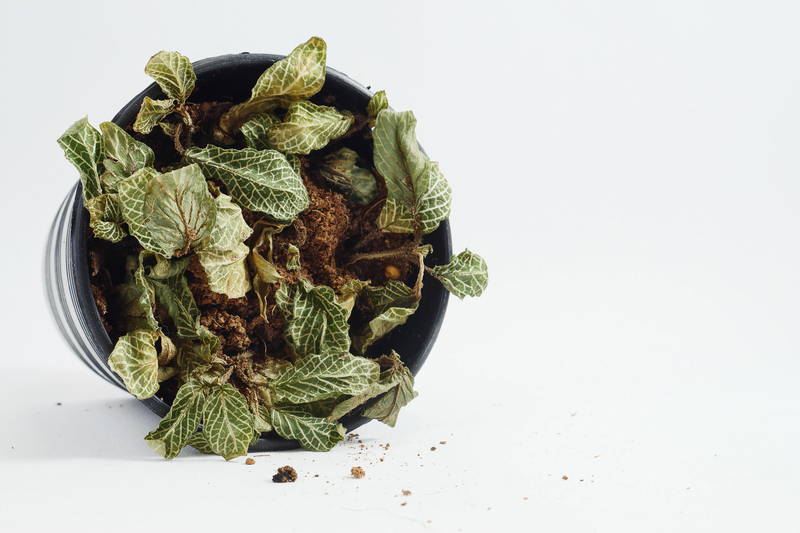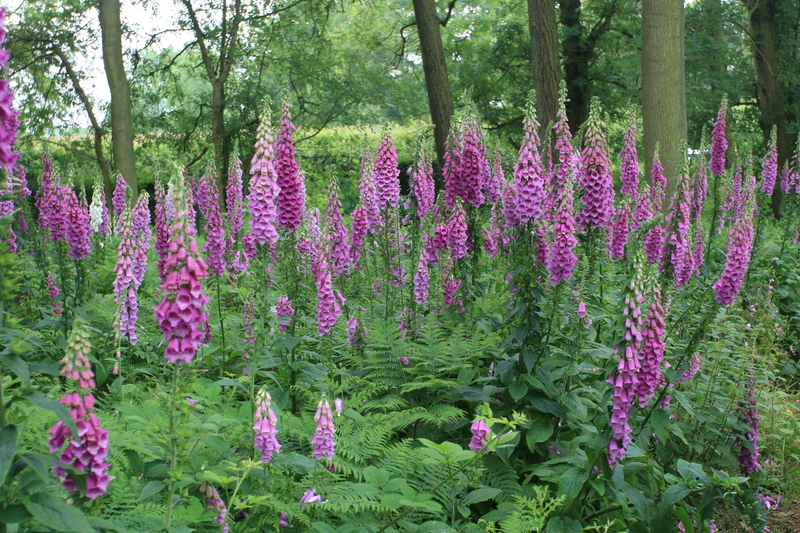Sow Seeds, Save the Earth: Gardening's Climate Change Benefits
Posted on 19/09/2025
Sow Seeds, Save the Earth: Gardening's Climate Change Benefits
Did you know that simple actions in your backyard can help shift the climate crisis? Gardening goes well beyond beauty and food; it offers immense climate change benefits and directly contributes to saving our earth. In this comprehensive guide, we're exploring how sowing seeds and nurturing green spaces are some of the most accessible solutions anyone can adopt in the fight against global warming and environmental degradation.
Why Gardening Matters for the Climate
With alarming news around climate change filling our headlines, every positive action counts. Gardening is more than just a pastime; it is an actionable climate solution within everyone's reach. By cultivating gardens, whether in your yard, balcony, or community, you actively participate in sustaining the planet.
- Gardening solutions aid in carbon sequestration, pulling greenhouse gases from the atmosphere.
- Urban gardening reduces the urban heat island effect and promotes biodiversity.
- The rise of regenerative and sustainable gardening practices amplifies these climate advantages.

How Does Gardening Help Mitigate Climate Change?
1. Carbon Sequestration: Plants as Climate Heroes
Plants, big and small, absorb carbon dioxide through photosynthesis. This process removes harmful greenhouse gases from the air and stores them in plant tissues and the soil. By sowing seeds and nurturing green life, you're helping to decarbonize the atmosphere and slow global warming.
- Trees and perennials store carbon for decades, making them top choices for climatically beneficial gardens.
- Composting garden waste enriches the soil and boosts its ability to hold carbon.
- Leaving grass clippings and plant residues on the soil literally locks away more carbon over time.
2. Supporting Biodiversity & Pollinator Habitats
Climate-resilient gardens aren't just about plants. Healthy ecosystems teeming with diverse species help stabilize climate factors, recycle nutrients, and keep pests in check without chemicals. By sowing a variety of native and pollinator-friendly plants, you provide refuge and resources for wildlife threatened by habitat loss and climate shifts.
- Native shrubs and flowers support bees, butterflies, and birds struggling due to changing temperatures.
- Richly planted gardens help ensure healthy food webs and functional local environments.
3. Reducing Food Miles & Emissions Through Homegrown Produce
Each tomato or lettuce leaf grown at home skips thousands of miles of shipping and the associated fossil fuel emissions. Urban and suburban gardening empowers individuals and families to grow food locally, effectively reducing carbon footprints and reliance on industrial agriculture, which is a major emissions contributor.
- Vegetable gardening at home means fewer trips to the store and less packaging waste.
- Sharing or selling excess produce boosts community resilience and decreases structural food waste.
4. Cooling Effects and Water Management
Gardens absorb sunlight and mitigate local temperature extremes through natural shade and transpiration. This "cooling the city" effect is crucial for urban areas facing increasing heatwaves due to climate change. Lawns, especially when replaced with gardens, reduce stormwater runoff and encourage groundwater recharge--a vital factor as we face unpredictable rainfall patterns.
- Planting trees and dense shrubbery can reduce local temperatures by several degrees.
- Mulched beds retain water, require less irrigation, and prevent soil erosion.
The Climate Impact of Seed Sowing: Small Seeds, Big Results
Every packet of seeds holds more than potential plants--it contains the power to spark a chain reaction of positive environmental impacts. Let's break down some key ways sowing seeds saves the earth in the climate context:
Regenerative Gardening Techniques
- Cover cropping: Sowing legumes and other cover crops after harvest replenishes soil nutrients and prevents erosion, storing more carbon beneath your feet.
- No-dig gardening: Minimizing soil disturbance keeps beneficial soil organisms thriving, improving carbon storage and water infiltration.
- Crop rotation and diversity: Alternating plantings reduces pests, avoids soil depletion, and maintains healthy systems--all of which contribute to more resilient food supplies in a changing climate.
Seed Saving and Heirloom Varieties
By saving the seeds from your most successful, resilient plants, you help perpetuate local food security and biodiversity. Heirloom and regionally-adapted seeds are crucial as temperatures shift and weather becomes unpredictable. Seed saving strengthens our global food system's ability to adapt.
Gardening's Role as a Climate Action Movement
Individuals collectively form a powerful movement. Community gardens and urban agriculture projects have transformed neighborhoods, inspired citizen science, and directly guided local climate policies. Sowing seeds may feel personal, but its impact ripples outward across communities and continents.
Actionable Steps: How You Can Garden for the Climate
Ready to make your green space a climate action hub? Here are practical, science-backed ways to maximize gardening's climate change benefits--no matter your space or experience level:
Start (or Expand) Your Green Space
- Container gardening works for balconies, patios, or windowsills--every plant counts!
- Convert sections of lawn to diversified beds: flowers, veggies, herbs, and native plants all improve ecosystem services.
- Organize or join a local community garden for collective climate resilience and food security.
Use Climate-Smart Composting
- Compost food scraps, plant trimmings, and leaves to create rich, carbon-sequestering soil amendments.
- Avoid sending organics to landfill --landfilled waste generates methane, a potent greenhouse gas.
Plant Trees and Perennials
- Trees and long-lived shrubs are the ultimate carbon sponges--prioritize these in garden planning.
- Select varieties best suited to your local climate for greater resilience and longevity.
Choose Native and Pollinator-Friendly Plants
- Mix native wildflowers, shrubs, and grasses with food crops to promote a climate-adapted, pest-resistant garden.
- Include a variety of bloom times so pollinators have food year-round, supporting ecosystem health.
Minimize Chemicals and Fossil Fuel Use
- Opt for organic, hand-powered tools instead of gas-powered mowers and trimmers to reduce emissions.
- Integrated pest management and cultural practices (like dense planting) decrease or eliminate the need for synthetic pesticides.
Gardening's Role in Climate Adaptation
Beyond reducing emissions, gardening offers practical ways to adapt to inevitable climate changes:
- Shade trees and vertical gardens protect homes from heatwaves and reduce energy use.
- Diverse, climate-smart gardens bounce back stronger after droughts, floods, or storms, safeguarding food and habitat during disruptions.
- Rain gardens and bioswales absorb excess rain, filtering pollutants and lessening flooding risks.
By sowing seeds and experimenting with climate-aware gardening methods, you're not only helping prevent future damage but also building community resilience right now.
Dispelling Myths: Common Concerns About Gardening and Climate
Does gardening always help the planet?
Not all gardening is created equal. Monoculture lawns, overwatering, and overuse of synthetic chemicals can harm rather than help. The key is adopting regenerative, diverse, and climate-adaptive practices. These ensure that your garden serves as a carbon sink, a biodiversity hub, and a climate buffer--rather than a resource drain.
What if I don't have space?
You don't need acres to make a difference. Balcony container gardening, vertical gardens, and even indoor herb windowsill gardens sequester carbon, support pollinators, and reduce food miles. Every plant--and every seed sown--counts!
Case Studies: Inspiring Gardening for the Climate
Greening Cities, Cooling Streets
Cities from New York to Singapore have implemented rooftop and urban gardening initiatives that slash street-level temperatures by several degrees, enhance air quality, and foster public health. These projects demonstrate the scalable potential of gardening's climate change benefits anywhere people live.
Community Gardens for Food Security and Equity
Across the globe, community gardens have empowered residents to grow healthy food, build social networks, and fight climate change--often in neighborhoods with few green resources. This collective action not only mitigates planet-warming emissions but also strengthens community ties and reduces environmental injustice.

The Future: Scaling Up Gardening's Climate Benefits
Imagine millions of people worldwide sowing seeds, composting, and shifting from lawns to resilient gardens. The impact would be profound: less carbon in the air, more food security, healthier pollinators, cooler cities, and stronger, more adaptable communities. Policymakers and organizations are increasingly recognizing gardening as a pillar of climate action, integrating it into urban design, conservation planning, and education.
Conclusion: Sow Seeds, Save the Earth--Your Invitation to Act
Gardening is one of the simplest, most joyful, and most effective ways to address climate change at home and in your community. As you sow seeds, you foster hope and take real, measurable action for a healthier planet. Whether you're new to gardening or a seasoned green thumb, your efforts matter. Join the global movement--embrace gardening's climate change benefits and watch your actions bloom into lasting impact for the Earth.
- Start small. Start today. Each seed can become a climate solution.
- Share your gardening journey and inspire others to sow seeds and save our earth--one plant at a time.
Further Reading & Resources
- Harvard Arboretum: Climate Change and Plants
- Royal Horticultural Society: Gardening for Climate Change
- Garden Organic UK
- America Community Gardening Association
Sow seeds, nurture the earth, and be the change our climate needs.

